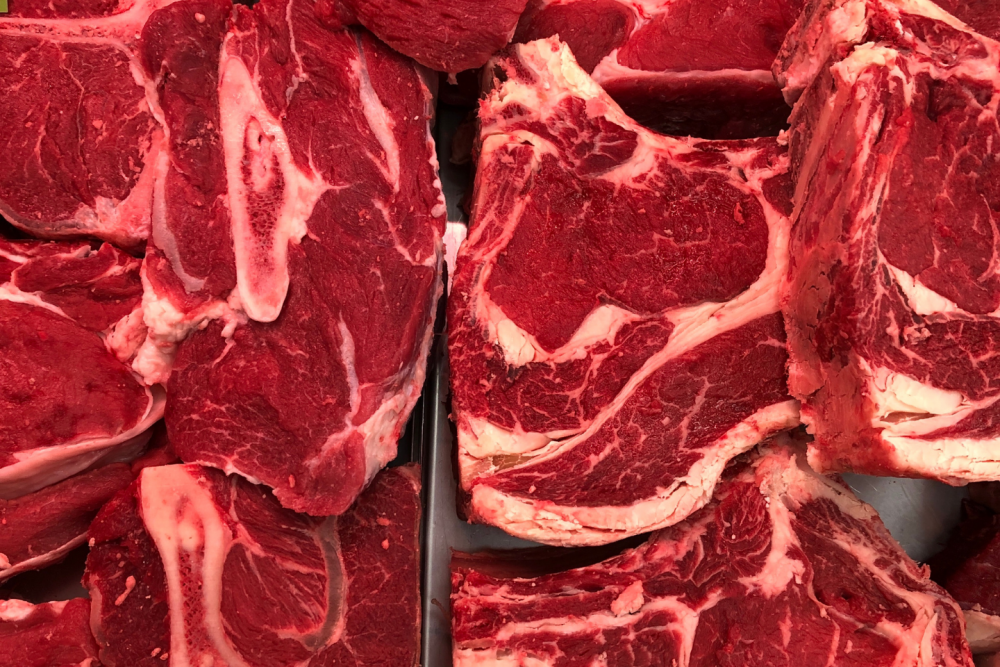
Students often fail to realize that a Punnett square represents the process of gene segregation in which the alleles encoding for a trait are separated during the formation of reproductive cells. In this standards-aligned, 5-E lesson plan, students will participate in an activity that allows the abstract concept of Mendelian studies to be applied to a trait easily seen in cattle, through the double muscling trait.
Estimated Time
Two, 1-hour class periods
Student Learning Targets
Students will use their knowledge of Mendelian inheritance and probabilities to complete a pedigree worksheet that requires them to predict the phenotype or genotype of specific cattle.
Key STEM Ideas
Pedigrees are a way of tracking genetic and inheritance information to visualize parental crosses and their resulting offspring’s genotype. Probabilities are calculated to predict the likelihood of crosses resulting in offspring with particular genotypes or phenotypes. Scientists and breeders use pedigrees to make a plan for selecting for certain traits or qualities that they feel are desirable or undesirable.
Students' Prior Knowledge
Students should be familiar with how genes are related to DNA and inheritance. Students should be knowledgeable of Mendelian genetics and using Punnett squares to calculate genotype and phenotype probabilities. Students should also be familiar with the terms heterozygous, homozygous, dominant, and recessive. Students will learn that pedigrees are used to map and predict the genotype or phenotype of livestock animals. Students will apply their knowledge of Punnett squares and probabilities to help a farmer decide which cattle should be mated to maximize the probability of getting offspring with the desirable phenotype.
Connections to FEWSS
Gregor Mendel originated the science of modern genetics. He conducted careful and detailed studies with garden pea plants and generated large numbers of different families from crossing two parents that differed in obvious traits. By generating large numbers of pea seeds and plants, he could look for mathematical regularities in the inheritance data in these families of peas across several generations. Mendel observed repeatable patterns of ratios in his experiments and proposed a biological model to explain the ratios. Mendel proposed traits that vary and are inherited are controlled by variation in “particles” that were inside the somatic cells and traveled in the gametes. These particles were later called genes by other biologists. Mendel called his explanation or model the principle of segregation. This model explains how genes are passed from generation to generation with predictable outcomes.
Cattle breeders and producers use the principles of inheritance uncovered by Mendel to predict and breed cattle for desirable traits while avoiding undesirable characteristics. Breeders use their knowledge of inherited genetic traits to select for traits such as muscle, milk production, and even coat color.
Double muscling is a naturally occurring homozygous recessive genetic defect. Double muscling in cattle is a result of the loss of function of a gene coding for myostatin. Myostatin is a hormone that controls the growth of muscles. Cattle that do not have functional myostatin will display an increase in the number of muscle fibers (hyperplasia) and, to a lesser extent, an enlargement (or hypertrophy) of muscle fibers.
Breeders are interested in double-muscled cattle because studies have shown that the meat quality (assessed by tenderness, ease of fragmentation, and amount of connective tissue) was better in carcasses with at least one defective myostatin gene than in carcasses with two normal myostatin genes. The meat on double muscled cattle is more valuable to consumers and producers, which may drive producers to breed for double muscling.
Under normal conditions, probability calculations can help us to predict what will result from potential genetic combinations of two parents. This concept is illustrated using Punnett squares and the outcomes can be mapped on pedigree charts. A pedigree can be used to determine trends in desirable traits (such as more muscle or higher milk production) or undesirable traits (such as susceptibility to disease). In addition, pedigrees can help breeders plan for crosses that will maximize the likelihood of desirable traits and minimizing the risk of undesirable traits.
Curriculum ConnectionsNext Generation Science Standards
- HS-LS3-3. Apply concepts of statistics and probability to explain the variation and distribution of expressed traits in a population.
Common Core Standards
- CCSS.MATH.CONTENT.HSS.IC.A.2 - Decide if a specified model is consistent with results from a given data-generating process, e.g., using simulation.
- CCSS.MATH.CONTENT.HSS.MD.A.3 - Develop a probability distribution for a random variable defined for a sample space in which theoretical probabilities can be calculated; find the expected value.
- Student Resources (Word Doc) (934.04 KB)
- Student Resources (PDF) (573.38 KB)
- Teacher Resources (Word Doc) (1.07 MB)
- Teacher Resources (PDF) (719.6 KB)
- Probabilities and Pedigrees (PPT) (1.15 MB)